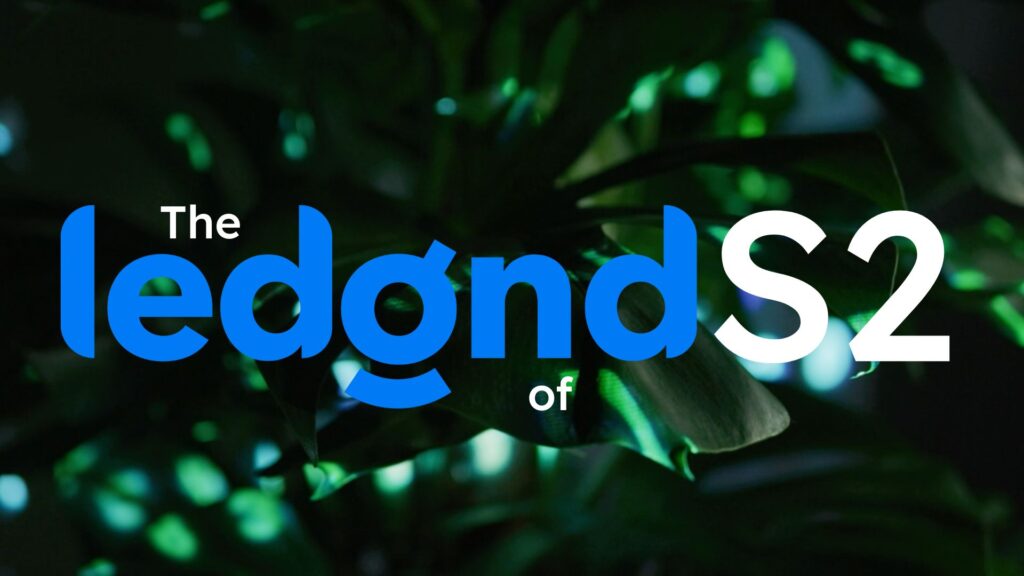Better cultivation decisions thanks to plant feedback
As a grower, you work every day to create the right growing conditions. Only when the plant performs at its best will you achieve the highest-quality end product. But how do you gain a complete picture of what the plant truly needs? Data-driven plant feedback is indispensable.
Traditionally, greenhouse cultivation is steered by climate. Growers adjust screens, lighting and ventilation so that temperature, humidity, CO₂ and light intensity align with target values. That is the physical side of cultivation: you regulate and control the greenhouse climate.
Yet this still doesn’t tell you whether the plant can actually handle that climate, and thrive under it. The air temperature in the greenhouse may be 25 °C. One crop will exploit that warmth effortlessly, while another will show signs of stress. Or consider two compartments with identical climate settings: one grows evenly, the other lags. The difference lies in how the plant responds to the same climate. Seemingly invisible issues can play a decisive role.
“We are seeing a clear shift among growers towards a plant-centred approach,” says Ramon van de Vrie, CCO at Ledgnd. “Climate control focuses on the environment; plant feedback focuses on how your crop reacts. And it’s precisely that plant response that determines whether your growing strategy works. It’s the difference between looking at the thermometer and looking at the plant’s internal signals, well before they become visible to the naked eye.”

Ramon van de Vrie, CCO
Beyond what the eye can see
Reliable data and a clear, accessible dashboard are essential for cultivation based on plant feedback. A network of sensors in the greenhouse acts as its eyes and ears. They measure what we cannot see, enabling you to make the right decisions based on data. This “plant-centred” data shows how the plant functions, whether it is in balance, and whether it is growing optimally or under pressure and exhibiting stress. For example, light deviation indicates the extent to which the plant is utilising available light; photosynthetic efficiency shows how well it converts that light into energy; leaf temperature provides insight into transpiration and heat load; and night-time values reveal whether the plant is recovering properly overnight.
Fine-tuning your growing strategy
To respond effectively to plant feedback, the incoming information must be analysed. A platform like MyLedgnd brings microclimate data and plant feedback together in a single, intuitive dashboard. Van de Vrie explains: “You don’t just see how the climate is performing, you see how the plant is reacting. You recognise stress moments earlier, you see the effects of climate conditions on your crop, and you can fine-tune your growing strategy accordingly.” At a glance, you can detect rising light deviation, falling photosynthetic efficiency or peaks in leaf temperature. This allows you to intervene in time and get the most out of your crop. With real-time climate monitoring and direct plant feedback, you prevent problems and increase yield. And because you handle light, water and nutrients far more precisely, plant-feedback-driven cultivation also helps make your operation more sustainable.
New articles

Ledgnd launches season 2 of video series “The Ledgnd of”
Ledgnd has launched the second season of its video series “The Ledgnd of”. The series takes a closer look at the key concepts and innovations shaping modern greenhouse horticulture. In the new season,…

Ledgnd at Hortibiz Next Level Data: From data to action
During the theme week “Next Level Data, Artificial Intelligence and Robotics” by Hortibiz News Radio, Ledgnd joined the table to talk about one key question: how do you turn all greenhouse data back i…

Duijvestijn, Ledgnd and Gavita International continue collaboration on LED optimization
Following the success of the first LED optimization trial at Duijvestijn Tomaten in Pijnacker, Duijvestijn, Ledgnd and Gavita International are launching a second research phase to be conducted over t…
Read more

Ledgnd launches season 2 of video series “The Ledgnd of”
Ledgnd has launched the second season of its video series “The Ledgnd of”. The series takes a closer look at the key concepts and innovations shaping modern greenhouse horticulture. In the new season,…

Ledgnd at Hortibiz Next Level Data: From data to action
During the theme week “Next Level Data, Artificial Intelligence and Robotics” by Hortibiz News Radio, Ledgnd joined the table to talk about one key question: how do you turn all greenhouse data back i…

Duijvestijn, Ledgnd and Gavita International continue collaboration on LED optimization
Following the success of the first LED optimization trial at Duijvestijn Tomaten in Pijnacker, Duijvestijn, Ledgnd and Gavita International are launching a second research phase to be conducted over t…
Do you want to know more?
Interested in what Ledgnd can do for you? Leave your phone number, and we will contact you as soon as possible for a non-binding informational conversation

